Visit: 9th June 2013
By Tom
The day after Kew Gardens we headed to Maritime Greenwich to see the sites that:
symbolize English artistic and scientific endeavour in the 17th and 18th centuries.
The two buildings we visited represent the scientific side of things, being the National Maritime Museum and the Old Royal Observatory.
We went to the Maritime Museum first, which is free to get into. It seems to be mostly divided into exhibit rooms which I would guess are permanent. There are some fascinating exhibits on Arctic exploration, the Arctic Convoys of WWII and the East India Company. Louise saw this photo of a cat smuggled on board a convoy ship. The cats served two purposes: as well as being great company they also kept rats and mice under control on the ships.
There was also a picture of a ship with a plane on a rail. This was used as a last-ditch defence – there were no runways on these ships so after the pilot had been launched from the slingshot and hopefully repelled the attackers he would have to deliberately ditch his plane in the ocean and hope he could do it close enough to the ship to be rescued.
I found this selection of historical ship figureheads pretty interesting.
Ross was taking a look too, and so was this rock and roll granny!
After the maritime museum we went up the hill (a surprisingly steep one) to the Observatory. The view up there is well-known to be a good one.
The observatory costs £7 to get in and is filled with exhibits on timekeeping. The problem that was vexing sailors at the time was their inability to know where they were when out at sea. It was relatively easy to calculate your latitude by looking at where the Sun was in the sky. But nobody knew how to calculate your longitude. The problem was so important that in 1714 Parliament offered a £20,000 prize to the first person who could do so. The solution lay in comparing local time at a ship’s current location (which was easily discerned from the position of the Sun in the sky) and comparing it to the time in London (hence Greenwich Mean Time). Since the Earth rotates 15° per hour, if you know you are 4 hours behind London then you must be 60° West. But this left the problem of knowing what the exact time was in London. There were two main methods proposed to solve this problem.
One was to build accurate clocks that could be carried onboard a ship. The museum has four of the original prototype chronometers built by John Harrison. They are complicated-looking contraptions and seem to have been restored to full working order.
The other main method of determining time in London involved precise measurement of the stars using giant quadrants. In 1675 King Charles II appointed John Flamsteed to be the first Astronomer Royal. From the Royal Observatory, Flamsteed spent four decades obsessively and jealously compiling star charts. Reportedly, Sir Isaac Newton was so desperate to test his theories against Flamsteed’s empirical data that he requisitioned it and published his work without permission. Flamsteed was so angry that he bought up all but 100 of the unauthorised works and burnt them.
A popular tourist spot at Greenwich is the “actual” GMT line. There was a big queue of people patiently waiting to take a photograph there, but Ross found a shortcut.
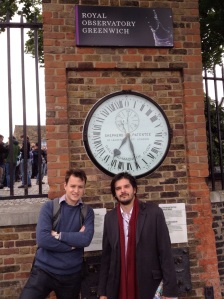
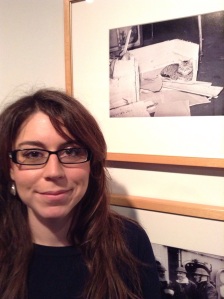
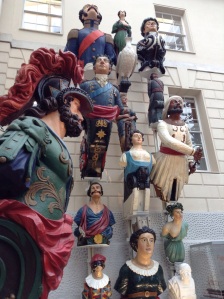

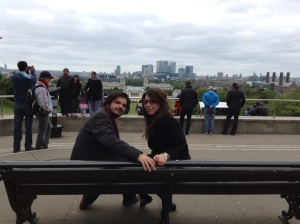
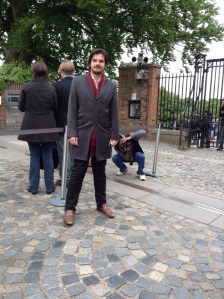
Pingback: • Palace of Westminster and Westminster Abbey including Saint Margaret’s Church | Tom's World Heritage Site travel blog